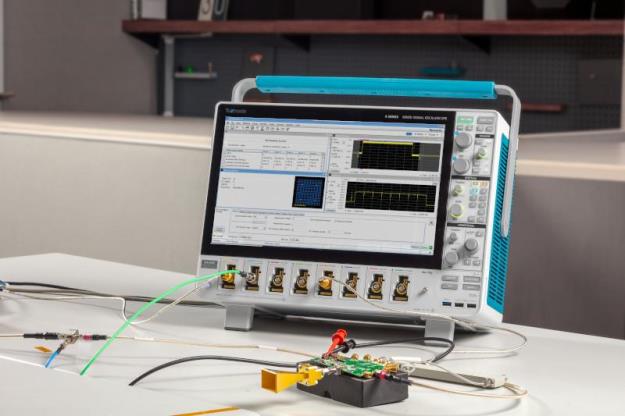

Why Beamforming Lies at The Heart of 5G & 6G Radio Design
Momentum behind 5G continues to grow, with the vast spectrum available at 5G millimeter wave (mmWave) frequency bands supporting extreme capacity, high throughput and low latency and an increasing number of 5G mmWave devices, from smartphones to laptops and more.
The testing and characterizing demands of new 5G networks, however, are exponentially larger than previous generations when it comes to network speeds, bandwidth and synchronization. This will require the testing of new technologies and components, including multiple-input, multiple-output (MIMO) antenna arrays, and the testing and generation of high GHz, millimeter-wave frequencies.
Consider, for example, two common pain points.- Testing mixed signals: Your device under test (DUT) has RF, digital and analog signals you need to test. You have to set up multiple stations and pay a very hefty price for all of the different equipment.
- MIMO/bandwidth: You can’t use the spectrum analyzer you used to test 4H signals; 5G signals are wider bandwidth and require testing more than one channel at a time.

Figure 2. 5G SignalVu Software Measurement: ACPR, SEM, EVM, and Power
That’s where beamforming comes in. We hear a lot about beamformers being the enabler of 5G mmWave, and it’s more than just hype. Beam management is a defining feature in mmWave communications and will play a critical role in the future of 5G wireless designs—in essence, beamforming is a requirement to make the 5G mmWave useful for users.

Figure 3. 5G mmWave Beamformer for a 4x4 MIMO dual polarized base station (Renesas Electronics)
Beamforming leverages multiple antennas broadcasting the same signal at slightly different times, allowing you to focus a wireless signal toward a specific receiving device with a more direct connection that’s faster, higher quality and more reliable. The beamformer is the heart of the system because it drives each of what can often amount to 512 antennas and 1,024 antenna elements. Because there are so many patches, or antennas, in each radio, it's important to optimize the overall performance, power consumption and costs of each of radio element.

Figure 4. Beamformer MIMO OTA Test Setup (left) with RF Power Measurement (top right) and Phase Match (bottom right)
With such a large multiplying factor, every aspect of the beamformer’s design is critical. Power consumption is multiplied by 512, and any imperfections or mismatches between elements are amplified as well. You need good RMS phase error between elements and orthogonality between phase and gain as you steer your beam; otherwise, sideband levels increase and put the performance of the overall system in jeopardy. All of this makes beamformers an essential part of 5G mmWave radio design.
There are challenges, however, in the number of man hours and equipment time required to test all aspects of beamforming. There are many settings, combinations of parameters and elements, and you need to be aware of coupling between various elements. From interference to blockers and effective isotropic radiated power (EIRP), measurements have to be taken from the perspective of the entire antenna area, which means conductor measurements are only so valuable. Over-the-air (OTA) measurements become critical.
So, what’s next? We need more, wider bandwidth. We’re already pushing the envelope with extremely high frequencies and high instantaneous bandwidth with 5G; the next step with 6G will be to optimize existing resources, making technology more eco-friendly and making better use of the limited spectrum.
Learn more about how Tektronix’s 5G testing and calibration solutions are optimized for wireless. Or watch our presentation, 5G Over the Air Measurement.




